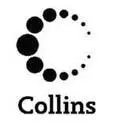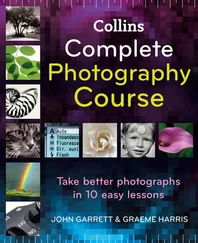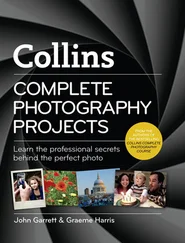Collins Complete Photography Manual
Everything you need to know about photography, both digital and film.

Cover Page
Title Page Collins Complete Photography Manual Everything you need to know about photography, both digital and film.
Introduction Introduction Photography means different things to different people. For some it is a way of capturing memories – of having a lasting reminder of special moments. For others it is a way of expressing themselves artistically. For a fortunate few, it is a rewarding way of earning a living. But for many it is simply one of the most fascinating hobbies there is to be enjoyed – a delicious blend of art and science that can be practised on its own or combined with other pastimes.
chapter 1 Getting Into Photography
chapter 2 Lenses and Accessories
chapter 3 Technicalities and Techniques
chapter 4 Composition, Lighting and Colour
chapter 5 Themes for Photography
chapter 6 Advanced Photography
chapter 7 Post-Production and Printing
Glossary
Index
Acknowledgements
Copyright
About the Publisher
Introduction Introduction Introduction Photography means different things to different people. For some it is a way of capturing memories – of having a lasting reminder of special moments. For others it is a way of expressing themselves artistically. For a fortunate few, it is a rewarding way of earning a living. But for many it is simply one of the most fascinating hobbies there is to be enjoyed – a delicious blend of art and science that can be practised on its own or combined with other pastimes. chapter 1 Getting Into Photography chapter 2 Lenses and Accessories chapter 3 Technicalities and Techniques chapter 4 Composition, Lighting and Colour chapter 5 Themes for Photography chapter 6 Advanced Photography chapter 7 Post-Production and Printing Glossary Index Acknowledgements Copyright About the Publisher
Photography means different things to different people. For some it is a way of capturing memories – of having a lasting reminder of special moments. For others it is a way of expressing themselves artistically. For a fortunate few, it is a rewarding way of earning a living. But for many it is simply one of the most fascinating hobbies there is to be enjoyed – a delicious blend of art and science that can be practised on its own or combined with other pastimes.
One of the secrets of success is choosing the right camera. Most of us now have one built into our mobile phone – and increasingly as digital resolution improves the quality of images produced is perfectly acceptable at relatively small degrees of enlargement. However, camera phones are extremely limited. While it is convenient to have them immediately to hand, so you can take pictures as and when the opportunity arises, they lackthe versatility of dedicated cameras.
For this reason, those who are serious about taking good pictures tend to spend as much as they can afford on equipment, rather than making do with what they have already. At the very least, you need a compact camera with a decent zoom lens, and ideally a Single Lens Reflex camera with a collection of interchangeable lenses and other accessories.
While you can tackle most popular subjects successfully with a compact camera, the tool of choice for serious photographers is an SLR, onto which you can fit everything from wide-angle lenses to open up perspective, and get more into the frame, to telephoto lenses that enable you to pull in distant subjects and compress perspective. Most also give more control over exposure, allowing you to control the shutter speed and aperture.
While some photographers still use film, the majority have now switched to digital. The advantages are obvious: the quality is fantastic, you can see your pictures immediately after you have taken them, and once you have bought the camera plus removable storage card – which can be used many times over – the running costs are minimal. Of course, you will need computer equipment to enjoy your photography to the full, but since most households now own a PC or Macintosh anyway, this is rarely a problem. Software to enhance images is bundled with most cameras or is readily available at a reasonable price. If you want prints to put in an album or frame, these can be ordered from photo labs at minimal cost, oryou might prefer to invest in an inkjet printer and produce them at home.
If you prefer using film, or have a significant investment in film cameras, one option is to continue shooting in the traditional way and either scan the negatives, transparencies or prints. This, however, can be extremely time-consuming, and since digital SLR bodies are now available that are compatible with most systems, it makes sense in most instances to make the transition to the latest technology.
This book assumes, therefore, that most readers are shooting digitally, and either using a compact camera with a zoom lens or an SLR with a range of lenses. In Chapter Two we consider in detail the opportunities offered by different lenses and lens settings, not only in terms of the subjects that can be taken successfully, but also with regard to the effects that can be produced. It is this variety and versatility that makes photography so endlessly fascinating. Adding a range of accessories, such as tripods and flashguns, increases your options yet further.
Developing your technique
Equipment, though, will only take you so far. Ultimately it is developing your technique that will determine how good your pictures are. And that comes to down to a number of key photographic skills: control over exposure; accurate focusing; effective composition; and powerful use of lighting.
Once you have mastered the different exposure ‘modes’ you will be able to put the right amount of light on the sensor or film in your camera in the most creative way – varying the shutter speed and aperture according to what you are seeking to express. You will also learn to recognize the kinds of situations in which exposure meters are most likely to be misled and get things wrong – and then what you can do about it.
Focusing, too, can sometimes be tricky. It is fair to say that modern, advanced focusing systems work well most of the time; however, if you are not careful, they will sometimes focus on the wrong part of the subject. Consequently, you need to know when to override automatic operation in your camera and take control yourself.
Effective composition is at the heart of successful photography. Faced with a particular subject, there are dozens of different ways in which the elements could be arranged in the frame. Of course, much of this is down to personal taste and choice – after all, it’s your picture! However, if you follow a few simple rules – such as using frames, dynamic diagonals and lead-in lines – your picture-taking will improve immeasurably. Colour, too, is crucial, and the way you blend tones can make or break an image.
As you become a more experienced photographer, you will also need to learn how to make the most of the many moods and nuances of daylight. Once you understand how light changes from dawn to dusk, from season to season, and according to the weather, you will be able to match the right light to the right subject. Quality of light is more important than quantity of light, and some of the best pictures are taken when ambient levels are low or at night. This requires excellent technique to avoid problems with camera-shake and exposure.
Читать дальше













